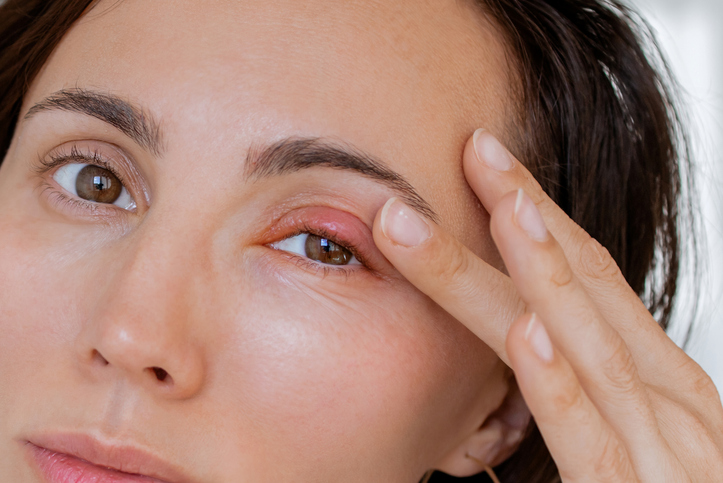Chalazions are common, treatable lumps that develop on the eyelids. Chalazions do not typically require urgent medical attention, but most patients would prefer to live without them. Learning how to treat these bumps can prevent one from needlessly enduring them. If you have chalazions or worry about developing them, take a look at this guide, which describes chalazion treatment and prevention.
What are Chalazions?
A chalazion most commonly expresses itself as a red bump on one’s eyelids. Chalzaiions are also referred to as eyelid cysts or meibomian cysts. They are not the same as styes, which also form on the eyelid but develop due to bacterial infections and are typically painful.
Chalazions form when a duct in the meibomian gland, located in the eyelid directly behind the eyelashes, becomes blocked. These glands produce an oily substance that keeps the eyes moist, so when the ducts become blocked, the oils pool into lumps on the eyelid.
These cysts may be painful when they first develop, but the pain dissipates quickly. The chalazion will likely fade on its own about a month or so after appearing. To aid in this, one can apply a lukewarm compress to the eyelid for 10 to 15 minutes at least four times a day.
Because meibomian cysts often disappear on their own, most patients will not need to undergo extensive treatment. However, those with more stubborn forms of chalazion may require professional medical intervention to remove these features from the body. Fortunately, several options are available to do so.
The Symptoms of a Chalazion
To the untrained eye, it is difficult to differentiate a chalazion from other types of eye injuries and disorders. Telltale symptoms of a chalazion include the following symptoms:
- Blurred or obstructed vision from the chalazion
- Mild irritation in the eyes
- Watering eyes
- Extremely swollen eyelids
Risk Factors for Chalazions
Several risk factors contribute to the development of chalazions. Understanding what makes a person more susceptible to their development can provide the tools required to mitigate the chance that they occur. Common risk factors for chalazions include:
- Chronically dry skin
- Certain skin conditions, such as dermatitis or rosacea
- Chronic eyelid inflammation, also known as chronic blepharitis
- Fluctuating hormonal changes
- A history of chalazions
Chalazions are most commonly diagnosed by eye care specialists, who can also recommend a course of treatment based on the details of your condition.
Chalazion Treatment and Prevention
In most cases, a chalazion will go away on its own within about a month. More persistent chalazions will require treatment either at home or at a medical office. Some of the at-home treatments that can aid in clearing chalazions include:
- Applying a warm compress to the chalazion
- Practicing good eye hygiene (i.e., removing makeup before bed, washing hands before touching eyes, wearing sunglasses outside, etc.)
If these at-home treatments fail to address the chalazion, you may need to seek out professional medical treatment. The following treatments are commonly employed when professionally treating a chalazion:
- Incising the chalazion and draining it of excess fluid
- Injecting steroids into the chalazion site to prompt a reduction of swelling
For those who wish to avoid such treatments altogether, there are preventive measures one can take to attempt to preclude the development of chalazions. The following strategies are helpful in discouraging meibomian gland blockage that leads to the growth of chalazions.
- Proper contact lens care: Proper contact lens care can help one prevent the development of chalazions. Such care includes washing one’s hands thoroughly before touching contact lenses and thoroughly cleaning the lenses before placing them in the eyes.
- Daily face washing: Washing one’s face daily can remove dirt and makeup, which will irritate the skin and eyes if left to linger.
- Regular hand washing: Washing one’s hands on a regular basis is another practice that can contribute to the preclusion of chalazions forming. Rubbing one’s eyes with unwashed hands is one of the most common reasons for chalazion development.
If your chalazion persists for more than a month despite at-home treatments, seek professional medical attention.
Your Top Resource for Eye Treatment in Orange County
OC Oculoplastic is a highly regarded eyelid surgery center in Orange County. If you are interested in receiving treatment to remove and treat chalazions, contact our office today to meet our team and discuss your options.
